Kerch - Overview
Kerch is a city located in the eastern part of the Crimean peninsula (Crimea Republic). It is one of the oldest cities in the world. There are plenty of various historical and architectural monuments and memorials of different historical periods and cultures on the territory of Kerch.
Since 2014, Kerch is controlled by Russia.
The population of Kerch is about 154,000 (2021), the area - 109 sq. km.
The current status of Kerch and Crimea
The current status of Kerch is disputed between Ukraine and Russia. De facto, it is controlled by Russia as the entire Crimea.
On March 16, 2014, a referendum was held and the results showed that the majority of Crimeans voted for independence of Crimea and joining Russia. However, the legitimacy of the referendum is questionable.
It was not recognized internationally. This event is widely regarded as the annexation of Crimea by Russia. Ukraine considers Crimea as its territory temporarily occupied by Russia.
History of Kerch
Its history began about 2,600 years ago when ancient Greeks settlers founded several independent city-states on the shores of the Crimean peninsula. One of them was Pantikapeya town.
Due to favorable geographical position of Pantikapeya, numerous trade routes from Europe, Asia and China crossed there. Later, the town was under the Roman Empire control.
From the 6th century AD, it was under the Byzantine Empire control. Bospor citadel was built. In the 7th century, Turkic Khazars took control of Bospor, and the town was named Karcha or Charsha.
Christianity was the main religion in the town during the period of Khazar rule. The church of St. John the Baptist was founded in 717.
From the 10th century, it was a Slavic settlement named Korchev, which belonged to the Tmutarakan principality. Korchev was the center of trade between Russia, the Crimea and the Caucasus.
In the 13th century, the Crimea was invaded by Mongols. After Mongols, in 1318, Kerch became a Genoese colony of Cerco (Cherkio) and served as a sea harbor.
In 1475, the town passed to the Ottoman Empire. During Turkish rule, the town fell into decay and served as a slave-market. It repeatedly suffered from raids of Zaporozhian Cossacks. In 1771, the Russian army invaded the Crimea and, in 1774, Kerch became the town of the Russian Empire.
In the late 19th century, mechanical and cement factories were built, and tinned food and tobacco factories were established. By 1900, it was connected to a railroad system. At that time, the population of the city reached 33,000.
Kerch was damaged heavily during the Second World War.
Kerch streets
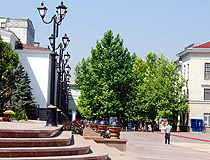
Kerch city street
Author: Mark Zhavoronkov
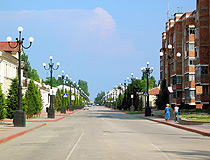
Kerch street
Author: Sergey Ashmarin
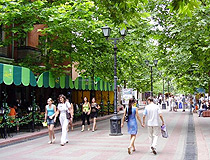
Kerch street view
Author: Sotnikov
Kerch economy and tourism
In the second half of the 20th century, the city became a large shipbuilding and metal casting center. Today, fishery plays an important role in local economy.
Kerch is standing on the shores of the Azov and the Black Seas. But, despite the seaside location, tourism is limited because of the industrial character of the city and associated pollution.
Despite the lack of beaches in the city area, there are a lot of them at a distance of 20 minute travel by a bus, train or taxi.
The city has plenty of impressive architectural and historical monuments. Ancient historical heritage of the city makes it attractive for scientific tourism.
Attractions of Kerch
The most famous places of interest are as follows:
- The site of an ancient town Panticapeum (the 5th century B.C. - the 3rd century A.C.);
- The Tsar burial mound – a tomb of one of Bosporus tsars (the 4th century B.C.);
- Mirmeky - an ancient town founded by the Greeks in the mid 6th century B.C.;
- John the Foreteller church (757);
- Yeni-Kale fortress (the 18th century);
- Big Mitridatskaya staircase built by Italian architect A.Digbi in 1833-1840s. The staircase reaches the top of the mountain Mitridat and consists of 428 steps;
- The Glory obelisk on Mitridat mountain;
- A museum complex in Adzhimushkai stone mines;
- Nimphey - archaeological excavations in the settlement Geroyevskoye;
- “Parus” - a monument to heroes of Eltigensky landing forces (opened on May 8, 1985);
- Kerch fortress (the 19th century);
- Demetra burial vault - a world-known ancient monument of Bosporus painting of the first half of the 1st century, it is located in a central part of the town;
- The museum of history and archaeology;
- The museum of history of Eltigensky landing forces.
Kerch holidays
- The Day when Kerch was set free, April 11 (1944);
- The Fisherman Day, the second Sunday in July (since 1988);
- The City Day, the second Saturday in September (since 1998).
Interesting facts
The Glory obelisk on Mitridat mountain was opened on August 8, 1944. It was the first monument to the World War II events on the territory of the USSR.
It is worth mentioning that stone of St.Trinity church - the main church in Kerch - was used for construction of the monument. The church survived the war and occupation but, in 1944, after the town was set free, it was destroyed by the Soviet regime.
The main square in the city (Lenin Square) was built in the 30s of the 19th century on the place of destroyed Turkish fortress.


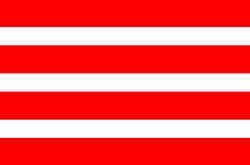
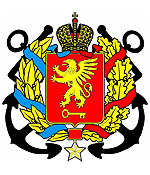



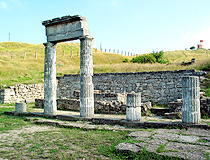
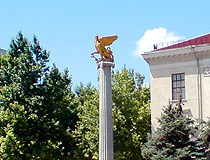
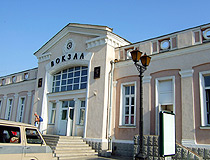
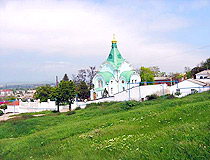
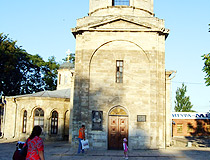
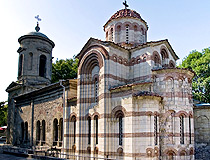
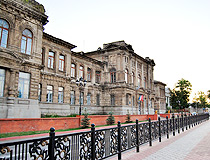
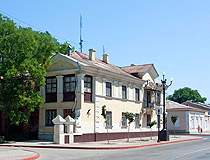
The comments of our visitors